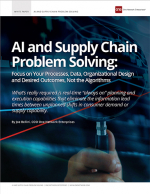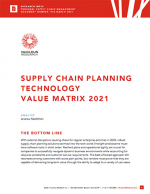Intelligent Process Automation: The Engine at the Core of the Next-Generation Operating Model
Full intelligent process automation comprises of five key technologies, here’s how to use them to enhance productivity and efficiency, reduce operational risks, and improve customer experiences.
What is Intelligent Process Automation?
In essence, Intelligent Process Automation (IPA) “takes the robot out of the human.”
At its core, IPA is an emerging set of new technologies that combines fundamental process redesign with robotic process automation and machine learning.
It is a suite of business-process improvements and next-generation tools that assists the knowledge worker by removing repetitive, replicable, and routine tasks.
And it can radically improve customer journeys by simplifying interactions and speeding up processes.
IPA mimics activities carried out by humans and, over time, learns to do them even better.
Traditional levers of rule-based automation are augmented with decision-making capabilities thanks to advances in deep learning and cognitive technology.
The promise of IPA is radically enhanced efficiency, increased worker performance, reduction of operational risks, and improved response times and customer journey experiences.
Intelligent Process Automation in its full extent encompasses five core technologies:
- Robotic process automation (RPA): a software automation tool that automates routine tasks such as data extraction and cleaning through existing user interfaces. The robot has a user ID just like a person and can perform rules-based tasks such as accessing email and systems, performing calculations, creating documents and reports, and checking files. RPA helped one large insurance cooperative to reduce excess queue procedures affecting 2,500 high-risk accounts a day, freeing up 81 percent of FTEs to take on proactive account-management positions instead.
- Smart workflow: a process-management software tool that integrates tasks performed by groups of humans and machines (for instance, by sitting on top of RPA to help manage the process). This allows users to initiate and track the status of an end-to-end process in real time; the software will manage handoffs between different groups, including between robots and human users, and provide statistical data on bottlenecks.
- Machine learning/advanced analytics: algorithms that identify patterns in structured data, such as daily performance data, through “supervised” and “unsupervised” learning. Supervised algorithms learn from structured data sets of inputs and outputs before beginning to make predictions based on new inputs on their own. Unsupervised algorithms observe structured data and begin to provide insights on recognized patterns. Machine learning and advanced analytics could be a game changer for insurers, for example, in the race to improve compliance, reduce cost structures, and gain a competitive advantage from new insights. Advanced analytics has already been implemented extensively in leading HR groups to determine and assess key attributes in leaders and managers so as to better predict behaviors, develop career paths, and plan leadership succession.
- Natural-language generation (NLG): software engines that create seamless interactions between humans and technology by following rules to translate observations from data into prose. Broadcasters have been using natural-language generation to draft stories about games in real time. Structured performance data can be piped into a natural-language engine to write internal and external management reports automatically. NLG has been used by a major financial institution to replicate its weekly management reports.
- Cognitive agents: technologies that combine machine learning and natural-language generation to build a completely virtual workforce (or “agent”) that is capable of executing tasks, communicating, learning from data sets, and even making decisions based on “emotion detection.” Cognitive agents can be used to support employees and customers over the phone or via chat, such as in employee service centers. A UK auto insurer that uses cognitive technology saw a 22 percent increase in conversion rates, a 40 percent reduction in validation errors, and a 330 percent overall return on investment.
AI and Other Technology in Relation to Supply Chain Control Towers Webcast
Inside Control Tower 4.0
Achieving Disruptive Results from Autonomous Control Towers
Join Our Live Webcast
April 6, 2017 | 10:00AM CDT
What You Will Learn About:
Rapid Change
The rapid change in control tower technology, and the four stages of evolution to Control Tower 4.0.
Industry 4.0
How Industry 4.0 technologies such as Internet of Things (IoT), machine learning, and autonomous systems are being incorporated into the new Control Tower, and the dramatic results they make possible.
Control Tower 4.0
How your company needs to re-align in order to thrive in this new era, and how Control Tower 4.0 can help.
Featured Guests
Seth Lippincott, Nucleus Research, Analyst and Adeel Najmi, One Network, SVP Products
What’s Related




Favorites







